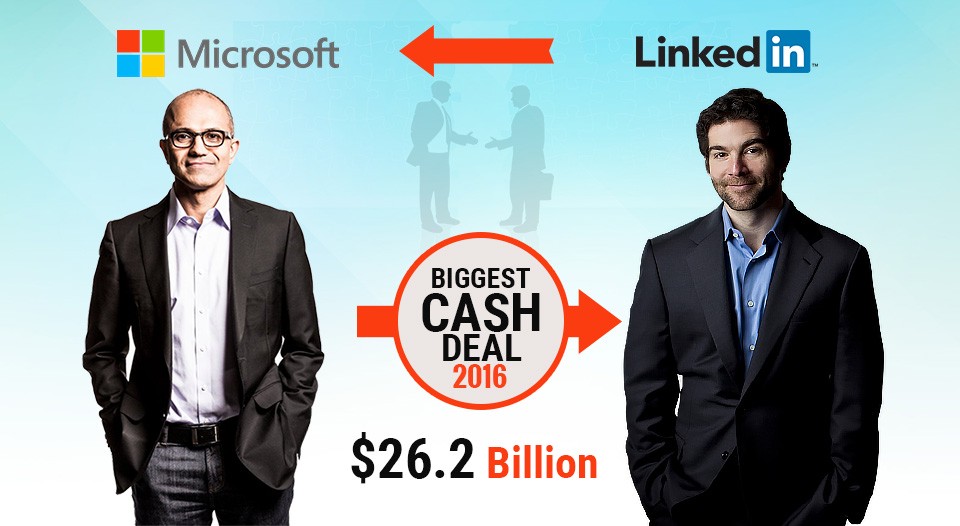Why has Microsoft acquired LinkedIn for $26B?

On June 13, 2016, Microsoft announced LinkedIn acquisition for $26B. It was Microsoft’s biggest acquisition ever and the sixth largest acquisition in technology industry.
Back in June 2016, the situation was: LinkedIn hasn’t been outperforming for several years. Its shares were down 10% on the year, unable to fully recover from a selloff in February 2016 that was triggered by weak 2015 earnings.
Was the purchase really worth $26B, considering not so great performance? Why Microsoft went for it and paid 50% premium comparing to last closing price? Let me try to analyse the deal further.
I assume the main components of the price, were the following:
- 1) Current valuation (“traditionally calculated”) – everything reflected by stock price and traditional valuation: revenue, cash flow, IP, brand, team & other assets
+
- 2) User base of 460 million users
+
- 3) Expectation of extra value (“Synergy Value”) – expectation of an extra value that Microsoft planned to derive
While the first part is relatively straightforward, the last 2 depend greatly on the context. Let me review these separately.
1) As of “traditional” way of valuation: the deal represents a purchase price of $196 a share, which is 29% below LinkedIn’s all-time high of $276 reached on Feb. 26, 2015. So, $26B price is actually not overwhelmingly high, as LinkedIn used to cost more not so long time before the deal.
Summary: The price was higher than market, but not too unfair.
(Some sources mentioned, there has been “series of events” preceding the deal, that took Linkedin market valuation down. Could it have been Microsoft? Worth considering)
2) Analysing user base: Microsoft paid $56 per user. According to sources, LinkedIn user brings $8/year (solely on using LinkedIn Services).
In my opinion, before the deal the value of Linkedin user has been underestimated, because of its double nature, which is not yet well utilized: Linkedin user has at least 2 aspects: professional and social, each of them can be monetized in own many ways.
Regarding professional aspect: Linkedin has Business data, including business relations, labour market structure and dynamics, behavioural data, historical business data, careers, content and interests, social graph. And it is well structured and accurate data, as people rarely lie on Linkedin.
Social aspect. Microsoft now has social media, in the segment where it is very strong– professional tools and B2B. Can be used to study behaviour, promote services and influence decision makers etc.
What if we add Microsoft into the equation? What could be the extra value derived from the synergy?
3) “Synergy value” There are official statements, as well as speculations about it, but to my analysis, my main idea is:
#1 professional tool cloud 1.2B users base
+
#1 professional network 460M users, inc interaction, social data
=
New, data-enriched Microsoft B2B offerings for united user base
In particular, Microsoft can derive the following from this synergy:
- • Promoting LinkedIn services to existing Office, Windows & other users
- • Promoting Microsoft products and services to LinkedIn user base
- • Improving relations with current users & corporate clients, based on insights and behavioural data
- • Integration with CRM, enabling unique features
- • Social media – to influence corporate decision makers
- • Insight into job market and other aspects of B2B
So, my summary of the deal would be:
- • From operational and pre-deal valuation, the price was not unfair
- • Value can be derived from synergy of world-leading professional software providers
- • Both professional and social aspects of united user base can be utilized better
Overall conclusion: very good deal. Data is the new oil, isn’t it?